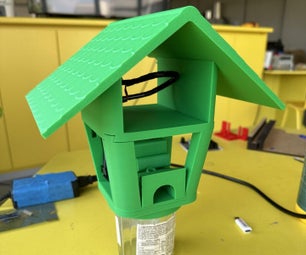Introduction: 10 Year LED Flasher
This LED flasher will blink continuously for 10 YEARS on a single 1.5v AA alkaline cell. This is possible by achieving an average current draw of 35uA (microamperes) .
Step 1: This Is the Complete Circuit Diagram of the Flasher
Main components:
IC1: CD4001 CMOS quad NOR gate
Q1: 2N4401 NPN tansistor
T1: 1/2" toroidal bifilar transformer ( 2x25T)
Bat:: 1.5v AA alkaline cell
Led1: high efficiency led
Step 2:
IC1 CD4001 A&B are wired as astable multivibrator with frequency=1Hz . This is the flash rate.
Step 3:
IC1 CD4001 C&D are wired as monostable multivibrator with pulse width = 1mS (1 millisecond) . This is the time the LED will be ON during each second of time. IC1D biases transistor Q1 through R3 in a modified "Joule Thief"(blocking oscillator) circuit. With this configuration, IC1-D "gates" the oscillator on & off.
Step 4:
When you connect the 1.5v cell for the first time, IC1 will not operate because it needs a minimum 3V to run. At this moment Vdd is 1.5v minus 0.3v (voltage drop of D1). By momentarily connecting jumper J1, transistor Q1 will be biased through R3 and will begin to oscillate. High voltage (flyback voltage) spikes at collector of Q1 will light LED1 , and will charge capacitor C4 through diode D1. Voltage at C4 (>3v) will feed IC1 which will start running and will run until battery is exhausted ( 10 years from now ! )
Led "clamps" voltage spikes to its forward voltage V(f) . If you use a RED led, add a 1N4148 diode in series, or the voltage at C4 will not be sufficient to feed IC1 CD4001. ( red leds have a lower V(f) ).
Step 5:
Current drain of the circuit with the LED "on" is 35mA. Since the duty cycle is 1/1000 , average drain is 35uA (microamperes) . Typical AA alkaline cell has a capacity of 3000mA/H at low current drain. This is equivalent to (3000*1000)/35 , or 85,714 hours, or 3,571 days, or 9.8 years! For more details, watch the video.











